Dismantling of an organ: a 1891 main reservoir


June 2016
Previous page: abundantly illustrated: the dismantling of an electropneumatic organ from Verschueren
The small village Dongen-Vaart, near where I live in Dongen, had its own church. Due to financial reasons it was decided to close the church. It was sold to a private couple. Although the very interesting 1891 one manual tracker action Vermeulen organ, on which I made a thorough report, would fit perfectly in the plans for a choir organ in Saint-Boniface in Alphen aan den Rijn, this was not allowed because it would mean adding electric action. In the end the church council decided that the organ would remain in the church and given to the new owner. In the meantime, the original main reservoir, designed for an organ with two manuals and pedals which never was built, was out of use after the organ was moved to the choir of the church.
When talking with the new owner on the organ, he decided that I could remove the old original Vermeulen 1891 main reservoir, so that the owner could use this space for other purposes.

After moving the reservoir, the two pumping bellows and wind inlets become visible. On the photo above, we see that only one of the two treadbeams is still present. The whole reservoir is made of oak. Probably the leather has never been replaced, although it was built in 1891!
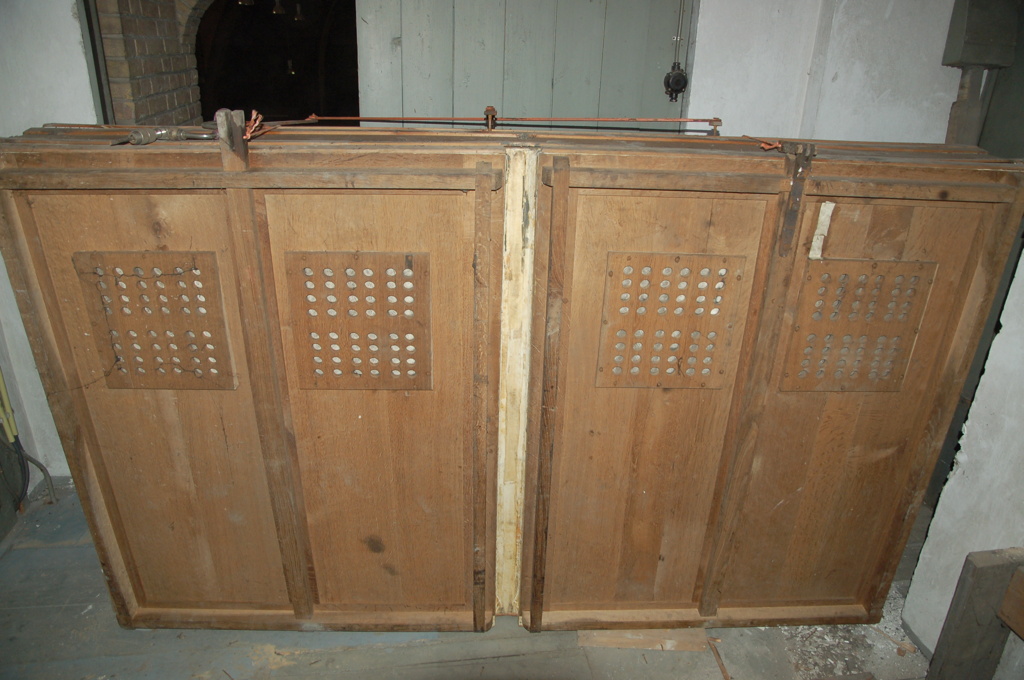
You can see the organ through the door aperture, it was moved to the front of the church in 1996, leaving the old reservoir behind.
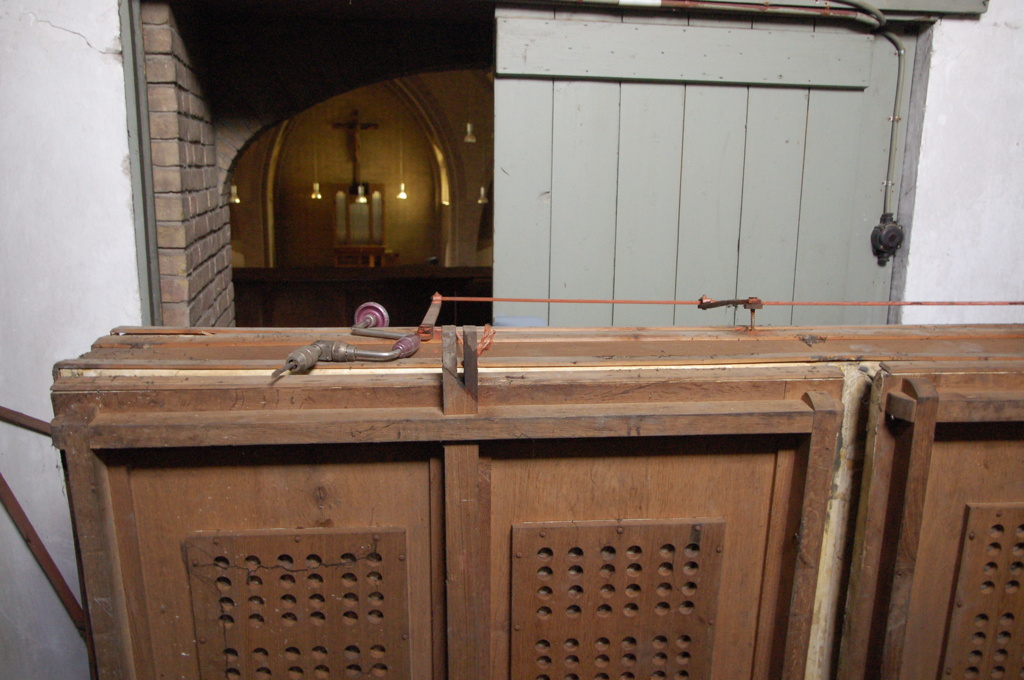
We did not expect it, but the 240 x 140 cm reservoir weighs 210 kilogramme. I have (had) a lot of friends. We used a building lift to help getting the reservoir to the floor.


The reservoir is stored upright in the workshop on dollies. You can see the fold of one of the two pumping bellow to left.
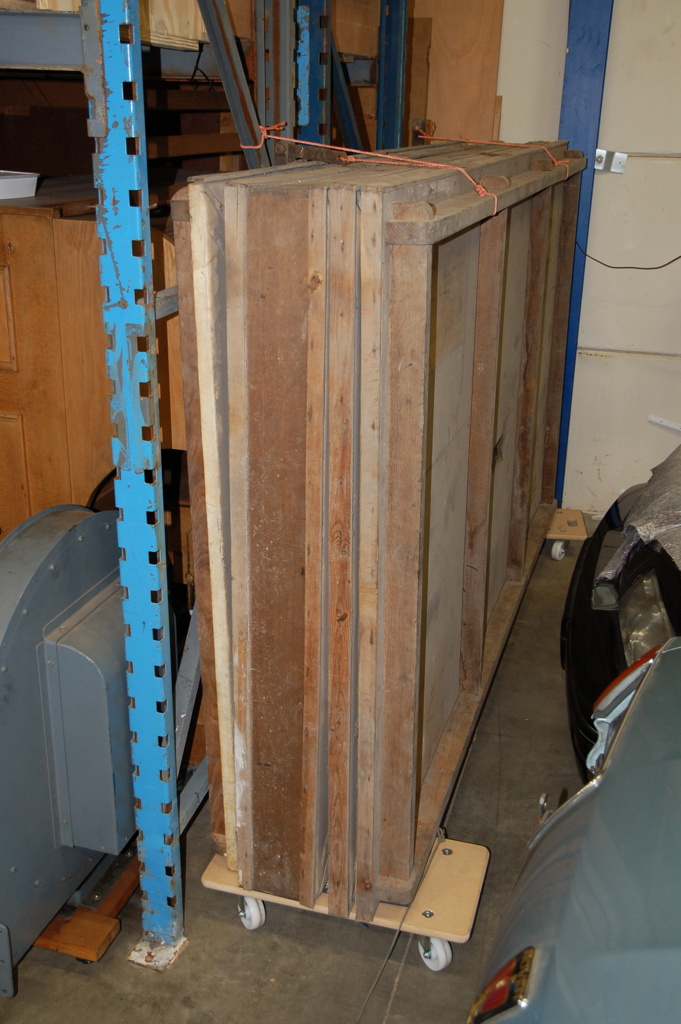
This is the way I concluded that the reservoir weighs 210 or 220 kilo. It was lifted from the dolly to the scale with my low car jack. Both ends have to be on the edge and the weight distribution has to be homogeneous.
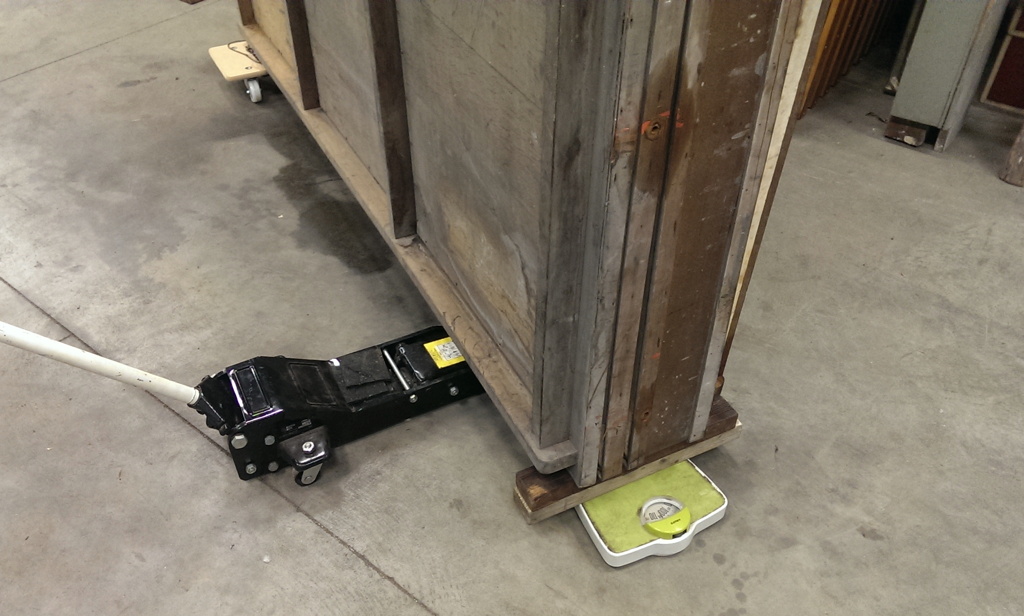
Both the reservoir and the wind channel are covered at the inside with paper with handwritten notes, partly from school … from before 1891 probably! This is to prevent leaking of wind via possible cracks and knots in the wood.
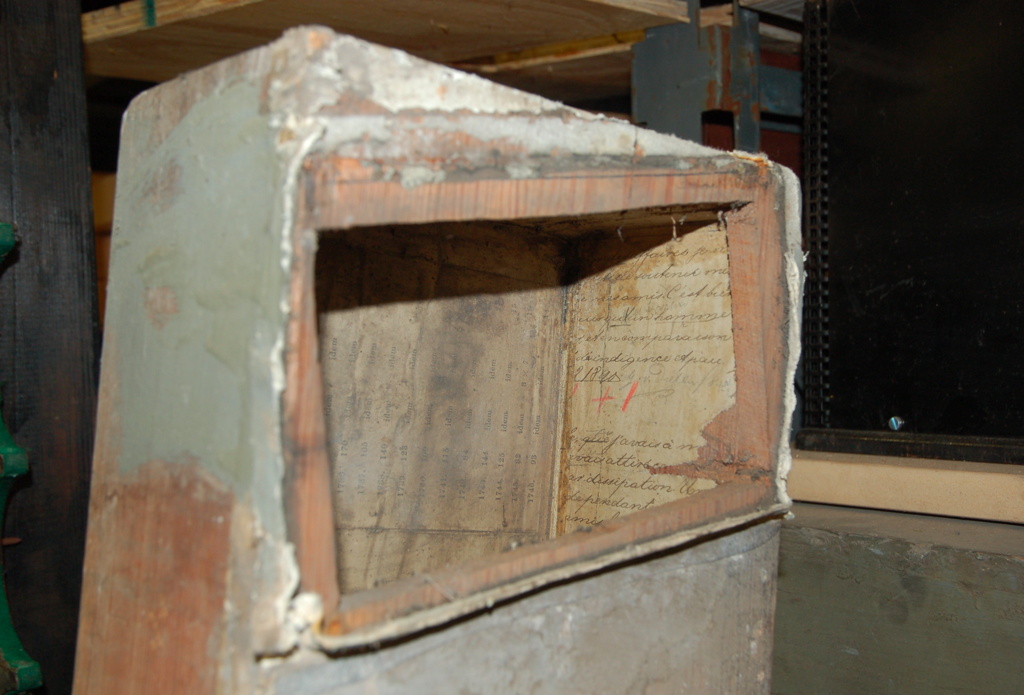
The pine tread beam had a hollow tread. It contained some sand, dirt, metal parts and charcoal. I assume this hollow space was filled to act as a counterweight while pumping and for the weight street dirt was used, primarily sand which escaped through the cracks, but also small metal particles and … charcoal! That is not what we see today on the road! The pine was heavily affected by wood-worm and after photographing and measuring, the whole part was destroyed, except for the treadplate itself which survived because it is made of solid oak.

Vermeulen used oak for the frame of the reservoir, but was not very precise in selecting only the heartwood. He turned the sap-wood parts to the inside, as you can also see in the leftmost beam in the second photo above. This oak sap-wood also suffers from wood-worm!
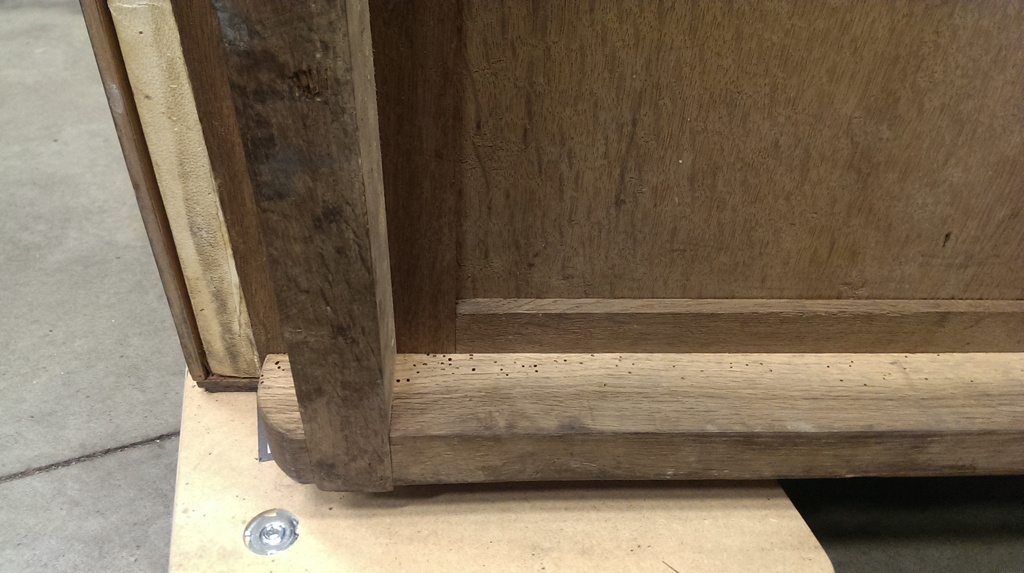
The sap-wood was treated with a chemical pesticide. This wet stuff increases the contrast, so the sap-wood becomes visible very clearly. We hope for the best! We will move the reservoir every now and then, because that is what wood-worms do not like.
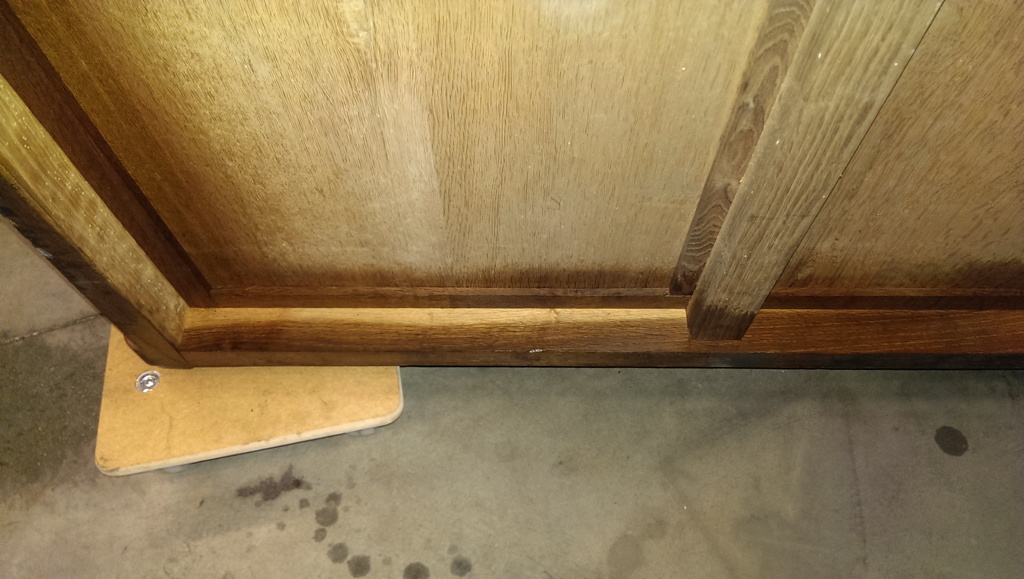
.
Overview: an organ for my own
Kind regards,
Rens Swart